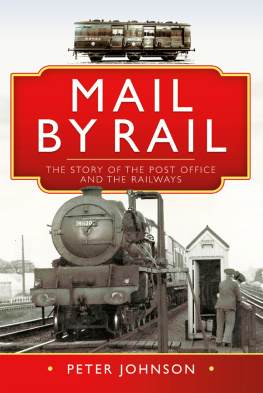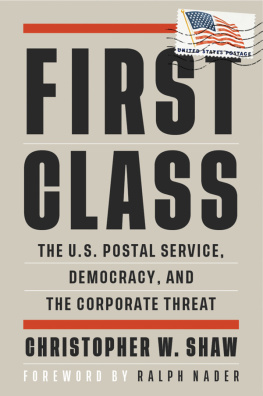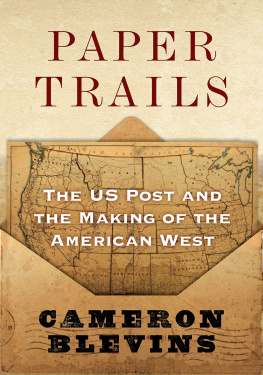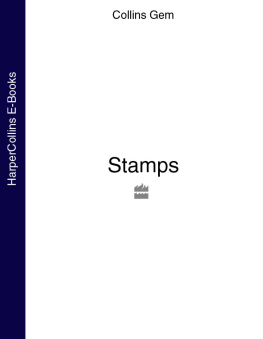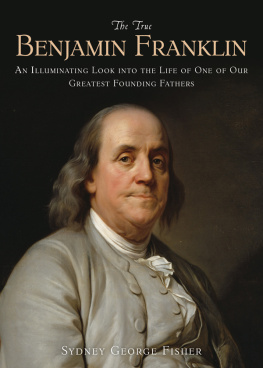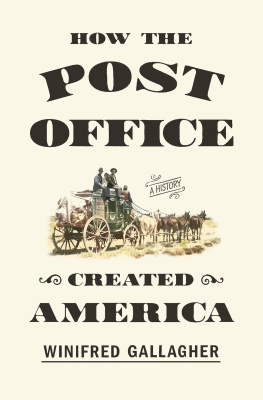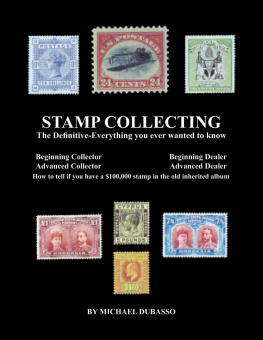NEITHER
SNOW
NOR RAIN
NEITHER
SNOW
NOR RAIN
A History of the
United States Postal Service
DEVIN LEONARD
Grove Press
New York
Copyright 2016 by Devin Leonard
Jacket design by Daniel Rembert
Jacket photograph FPG /Staff / Getty Images
Author photograph by Daniella Zalcman
All insert photos courtesy of the Library of Congress, with the following exceptions: Photos 2.1 (Crowds in San Francisco), 2.3 (Adams Express), 9.1 (Downtown Manhattan), 9.2 (Chicago), 9.4 (Midtown Manhattan), 9.5 (Philadelphia): New York Public Library. Photo 9.3 (Washington, D.C.), 12.2 (James Farley): Wikimedia Commons. Photos 3.3 (Letter Carrier), 4.5 (Sorting by Hand), 6.2 (Child Mailing), 8.4 (Clerks), 11.3 (Air Mail): National Postal Museum, Smithsonian Institution. Photos 14.4 (Zip Codes), 14.5 (Mr. Zip), 16.13: United States Postal Service. Photo 15.1 (Postal Strike): Neal Boenzi/ The New York Times /Redux.
All rights reserved. No part of this book may be reproduced in any form or by any electronic or mechanical means, including information storage and retrieval systems, without permission in writing from the publisher, except by a reviewer, who may quote brief passages in a review. Scanning, uploading, and electronic distribution of this book or the facilitation of such without the permission of the publisher is prohibited. Please purchase only authorized electronic editions, and do not participate in or encourage electronic piracy of copyrighted materials. Your support of the authors rights is appreciated. Any member of educational institutions wishing to photocopy part or all of the work for classroom use, or anthology, should send inquiries to Grove Atlantic, 154 West 14th Street, New York, NY 10011 or .
Published simultaneously in Canada
Printed in the United States of America
ISBN 978-0-8021-2458-6
eISBN 978-0-8021-8997-4
Grove Press
an imprint of Grove Atlantic
154 West 14th Street
New York, NY 10011
Distributed by Publishers Group West
groveatlantic.com
To Eileen, Colin, and Faith
The postal establishment of the United States is the greatest business concern in the world. It handles more pieces, employs more men, spends more money, brings more revenue, uses more agencies, reaches more homes, involves more details and touches more interests than any other human organization, public or private, governmental or corporate... There are other nations that number more people. But there is none whose intercommunications, in area of sweep and magnitude of proportions, approaches the United States.
Charles Emory Smith, U.S. Postmaster General, 1899
No one really runs the Post Office.
Winton Blount, U.S. Postmaster General, 1968
Contents
Prologue
Growing up in Queens, Evan Kalish didnt go to the post office very often. When he needed to send somebody something, he used his computer and later his iPhone. But everything changed after Kalish graduated from Brown University in 2008. He wanted to see the whole country and set off on a three-month road trip to Minnesota in his Toyota Camry. He took pictures of himself in front of post offices in every town he visited so he had proof that he had actually been to these out-of-the-way places, and he started sending letters to his friends while he was on the road. I really got into it, he says.
The more post offices he visited, the more fascinated Kalish became. They were everywhere, and each one was different. When he returned to New York, Kalish was so inspired that he decided to visit every post office in America. It would take years, of course. There were 36,723 post offices in the United States. So what? Kalish would see the whole nation by the time he was through.
Kalish created a blog cheerfully entitled Going Postal and began to chronicle his travels on the Internet. He visited every post office in New York City and Long Island and most of the ones in northern New Jersey. He traveled I-95, snapping pictures of himself in front of post offices from Baltimore to Boston. Kalish swooned over the one in Nashville, the walls of which were decorated with hundreds of autographed photos of country music stars. He was charmed by a purple post office in Phillipsville, California, near the Oregon border. He cultivated a palate for the stylish post offices constructed during the New Deal era, which often had splendid murals, some of them painted by famous American artists like Ben Shahn and Milton Avery. The murals turned Kalishs journey into a treasure hunt. Its almost like the institution is a giant museum, Kalish says. Its fun to try to see if you can find all the galleries.
Sometimes postmasters tried to chase Kalish away, saying that he had no right to take pictures of their buildings. What if he was a terrorist? Kalish responded that they couldnt hassle him as long as he was outside on public property. Others recognized Kalish from his blog and gave him tours, pulling old photographs from their filing cabinets to show him. Kalish made a lot of friends this way, which was nice for someone who could be rather shy.
By the end of 2010, Kalish had visited 1,561 post offices and had made an unexpected discovery: he wasnt alone. He met a man who had been to 20,000 post offices over the course of 40 years. He befriended two others who had each been to more than 10,000. Kalish went on a summer excursion with his fellow enthusiasts to visit post offices on islands off the coast of Maine. They chartered a boat and went to MacMahan Island. There are no roads on MacMahan Island, just unmarked trails. But there was a post office waiting for them. They took a ferry to Bustins Island to visit another one in a small yellow building along with the public library. The ferry we happened to take was also the mail ferry! Kalish wrote on his blog.
Kalish announced on Going Postal that he had been to another 1,253 post offices in 2011. But the more Kalish immersed himself in the infrastructure of the U.S. Postal Service, the more there was to see. He now understood that behind all of those post offices, there was a network of 461 processing plants, some with floors big enough to hold several football fields, through which millions of letters and packages flowed. He couldnt just walk into these places; they werent public buildings. But with the help of his postal connections, he found people who let him in. Everywhere Kalish looked, he saw mail trucks and mailboxes. To think that he had spent most of his life oblivious of them all.
But Kalish needed to move quickly. The U.S. Postal Service was awash in red ink. In 2011, it revealed that it had lost $8.5 billion the year before. As people abandoned the mail, it wanted to close post offices, shutter processing plants, and shed employees. Kalish was working on a graduate degree in geospatial analysis at the University of Pennsylvania. He hung a map on the wall of his apartment showing Pennsylvanias endangered post offices in concentric circles. He didnt have classes from Friday until Monday evening. I would take my car every weekend and visit clusters of them, Kalish says. It was a race against the clock.
The U.S. Postal Service is a wondrous American creation. Six days a week, its 300,000 letter carriers deliver 513 million pieces of mail, more than 40 percent of the worlds total volume. In parts of America that it cant reach by truck, the USPS finds other means to get people their letters and packages. It transports them by mule train to the Havasupai Indian Reservation at the bottom of the Grand Canyon. Bush pilots fly letters to the edges of Alaska. In thinly populated parts of Montana and North Dakota, the postal service has what it refers to as shirt pocket routes, which means that postal workers literally carry all their letters for the day in their shirt pockets. At a time when the USPS is losing several billion letters a year to the Internet, it still has to do this six days a week because it is legally required to provide universal service to every American home and business. Is it any wonder the USPS struggles to make money, even now that it also delivers packages on Sundays for Amazon?


